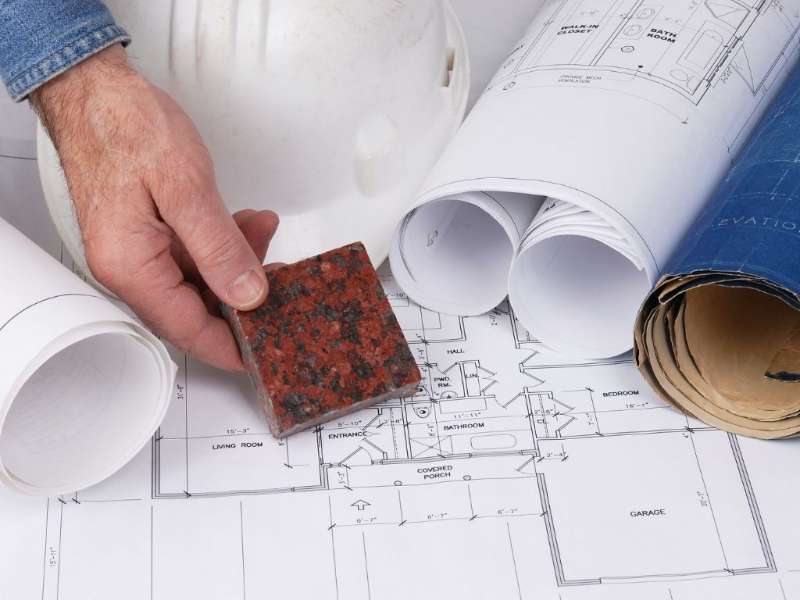Flipping properties success comes down to understanding the key factors before committing to a property. The goal is simple: buy, renovate, and sell for a profit. However, many new investors rush into deals without fully analysing the property, which can lead to unexpected costs and reduced profit margins.
If you're flipping homes in Glasgow, Edinburgh, or other parts of Scotland, getting the basics of property analysis right will lead you to success. Let’s break down into the steps you need to take to confidently analyse a property before taking the plunge.
Understand the Local Area
Before you even think about purchasing a property to flip, the property market in Scotland can vary greatly from region to region, and knowing which areas are growing and which are stagnating can make all the difference in the profitability of your flip.
Start by focusing on cities like Glasgow, Edinburgh, and emerging areas like Falkirk and Linlithgow. These locations often offer plenty of potential, especially if you’re able to spot up-and-coming areas where property prices are lower but rising. Take time to research current trends: Are prices increasing in certain areas? Are there any planned developments, such as new transport links or infrastructure projects, that could boost property values in the near future?
To understand the market, use online property platforms such as Rightmove, Zoopla, and the ESPC (Edinburgh Solicitors’ Property Centre) to stay updated on property prices and recent sales in your chosen area. Compare the sale prices of similar properties to get a clearer picture of the market value. It’s also worth visiting properties in person to gauge the local area’s appeal—things like access to public transport, proximity to amenities, and overall area development can impact the sale price.
Networking with local estate agents is also invaluable. They’ll have first-hand knowledge of the areas you’re targeting, which can help identify properties that may not yet be on the market or that have been overlooked by others. Agents can also provide insight into market trends, like what types of properties are in demand and where the market is heading.
Assess the Property’s Condition
Once you've identified a potential property, the next step is a thorough assessment of its condition. The goal is to identify issues that could either add significant costs or reduce the property's overall value. While a fresh coat of paint or new flooring might boost appeal, structural or hidden issues can easily eat into your budget if not addressed early.

Start with the essentials: the roof, foundation, plumbing, and electrical systems. These are the most costly and time-consuming areas to repair, and any issues here could cause major setbacks. Look for signs of damp, cracks in walls, and water damage, all of which can signal deeper issues. These might seem like minor problems, but fixing them can get expensive, and sometimes it’s better to walk away from a property with major structural issues.
A professional surveyor could help identify issues you may not spot on your own. They can help uncover hidden problems, like faulty wiring, or areas that may need a full overhaul. For example, if the roof is damaged or leaking, this could cost you several thousand pounds to repair, eating into your potential profit.
Don’t just focus on the obvious—look at everything with a critical eye. Is there damp under the floorboards or in the loft? Are the windows in need of repair or replacement? These smaller issues can be quick fixes, but they still add up.
By understanding the true condition of a property and factoring these repairs into your budget, you’ll be in a much better position to determine whether the flip is worth your time and investment.
How to Assess Renovation Costs and Value
When flipping properties, you need to understand renovation costs to determine whether the deal is worthwhile. It’s easy to get carried away with grand plans for extensive renovations, but overextending your budget can eat into your profits.

Start by focusing on key areas that typically offer the highest return on investment: kitchens, bathrooms, and flooring. For example, a modest kitchen renovation with updated cabinets, worktops, and appliances could cost around £4,500. Bathrooms might be updated for as little as £900, but these changes often make the biggest difference in buyer appeal. Flooring is another important aspect—spending £2,800 on new materials and installation can vastly improve the property's overall look and feel.
While cosmetic improvements can boost a property’s value, don’t overlook more significant issues. Structural problems like roofing or foundation issues can escalate quickly. For instance, a basic roof repair might cost £850, but depending on the severity of the damage, the costs could rise. Always factor in these potentially hidden expenses to ensure that the property remains profitable.
Once you’ve identified the necessary improvements, break down the costs by materials, labour, and any unexpected expenses. Include a contingency fund for surprises that often arise during renovation.
Legal and Regulatory Considerations
In Scotland, several key aspects need to be taken into account before moving forward with a property flip, such as The Missives Process, which binds you to the sale once both parties agree on terms.Once missives are concluded, the sale is legally binding. Make sure you consult with a solicitor before entering this process to avoid any complications or unexpected delays.
Before purchasing, it’s important to check the Title Deeds for any legal restrictions, disputes, or covenants that could affect the renovation or sale. Additionally, if your renovation plans involve major structural changes, make sure you obtain the necessary planning permissions. Not doing so could result in fines or having to undo completed work.
The Best Way to Find Undervalued Properties
Finding off-market deals is one of the best ways to ensure you get a good deal on a property. Off-market properties haven’t been listed publicly, so there’s less competition, and you’re more likely to negotiate a better price.
Start by building a network with estate agents, auction houses, and property solicitors in your area. These connections often give you access to properties before they hit the market. Building strong relationships with local professionals allows you to hear about opportunities early, potentially saving you money and time in the process.
You can also look at direct-to-vendor strategies, where you approach property owners directly to see if they’re willing to sell. This method often leads to properties that haven’t been advertised yet, and you can negotiate without competing against others. The key is to become a trusted contact for property owners who may want to sell without going through the public market.
Understanding Market Value and Calculating Profit
Once you’ve identified the right property, assessed its condition, and estimated renovation costs, it’s time to focus on determining whether the flip will actually be profitable. Understanding the true market value of a property and calculating the expected profit from the flip is crucial before you commit.
Market Value Analysis
While many properties are listed with a price, that price isn’t always an accurate reflection of the property’s true worth. Use tools like Rightmove, Zoopla, or ESPC to check recent sales of similar properties in the area to get a better idea of the market value. Additionally, local estate agents can give you a clearer picture of what the property could sell for after renovations, based on current market conditions.
The Profit Calculation
To calculate your expected profit, start with the purchase price of the property, then subtract the renovation costs (including labour, materials, and unexpected expenses). You should also factor in holding costs such as loan interest, insurance, and utilities during the renovation period. Don’t forget about selling costs, including agent fees and solicitor fees, which typically amount to around 5-7% of the sale price.
Once you’ve accounted for all these costs, compare your total expenses to the potential sale price. The difference is your profit margin. Be sure to keep your profit margin in mind throughout the renovation process to ensure you don’t overspend.
Risk Management and Buffering Against Losses
No flip is without its risks. Market conditions can change, unforeseen repairs may arise, or renovation costs may exceed expectations. That’s why it’s crucial to include a contingency fund of around 10-15% of your total project costs. This buffer helps cover unexpected costs, ensuring you’re not caught off guard.
Conclusion
If you’re feeling uncertain about taking the first step in property flipping, that’s completely understandable. The process can seem overwhelming, especially when you’re just starting out. But you don’t have to go through it alone. Stewart Thomson Property offers coaching designed specifically for beginners, helping you understand each step, from finding the right property to managing renovations and ensuring a profitable sale.
If you’re ready to move forward but need more guidance, don’t hesitate to consult with Stewart Thomson Property. With our expert coaching, you’ll gain the confidence and knowledge to make smarter property decisions. Reach out today to learn more about how we can help you start flipping properties successfully, even if it’s your first time.



































